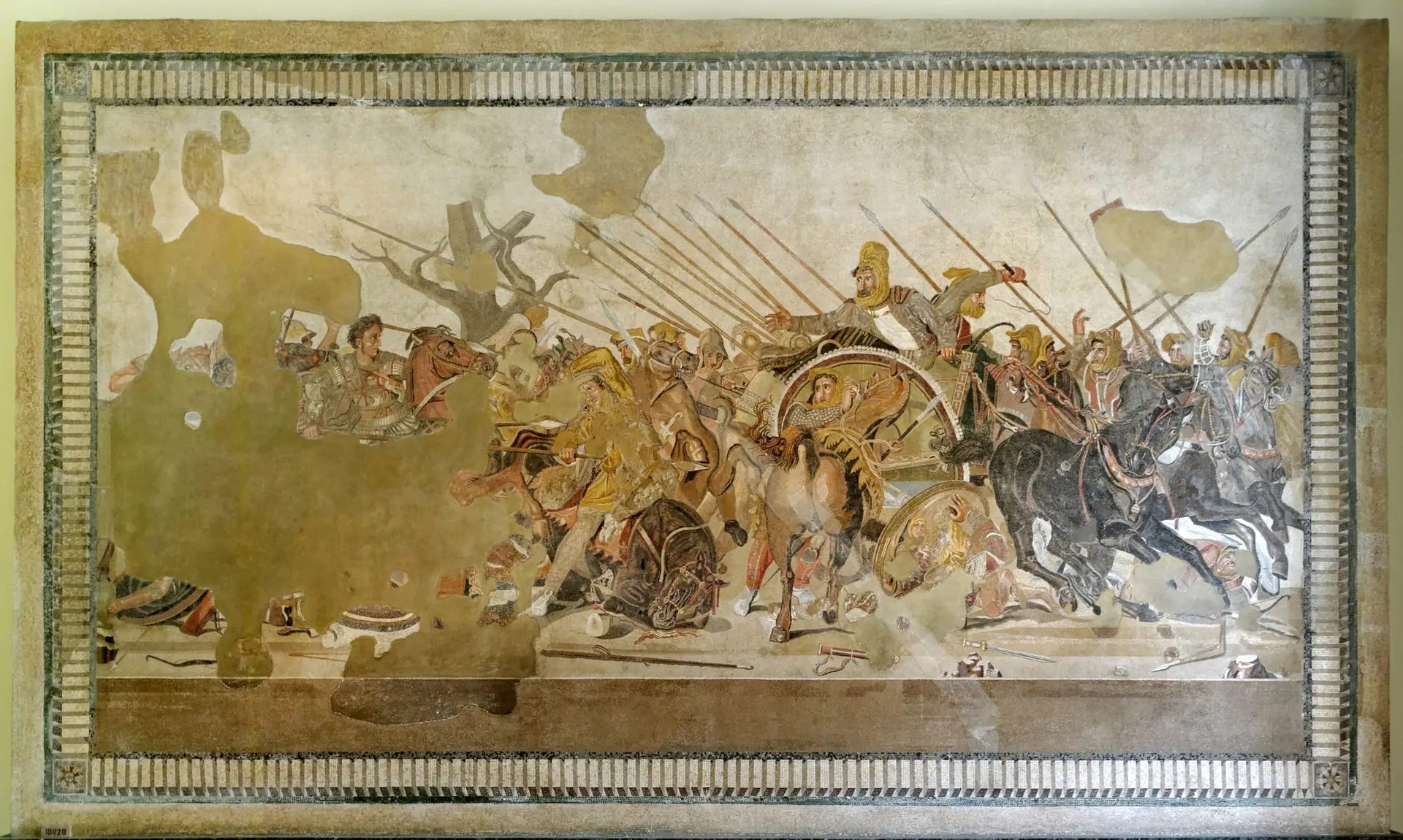
The Battle of Gaugamela might have had a different outcome.
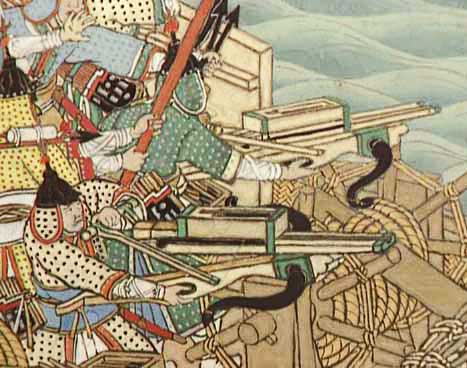
Naval battle scrolls depict Korean soldiers utilizing repeating recurve crossbows during the Imjin War (Wiki Image).
You are correct. The repeating crossbow was a very effective weapon, and it could have made a significant difference in the Battle of Gaugamela. The Macedonian phalanx was a powerful formation, but it was vulnerable to concentrated fire from archers. The repeating crossbow would have allowed the Persians to fire a much higher volume of arrows at the Macedonians, which could have disrupted their formation and caused heavy casualties.
In addition, the repeating crossbow was a relatively new weapon at the time, and the Macedonians may not have been familiar with it. This would have given the Persians an additional advantage, as they could have used the weapon more effectively.
Of course, it is impossible to say how the Battle of Gaugamela would have turned out if the Persians had repeated crossbows. However, this weapon could have significantly impacted the battle’s outcome.
Here are some additional thoughts on how the repeating crossbow could have changed the battle:
- The Persians could have used the repeating crossbow to harass the Macedonians from a distance, making it difficult for them to advance.
- The repeating crossbow could have been used to target the Macedonian officers, who were essential to the command and control of the phalanx.
- The repeating crossbow could have broken up the Macedonian phalanx, making it easier for the Persians to exploit their numerical superiority.
Overall, the repeating crossbow was a very powerful weapon that could have significantly impacted the Battle of Gaugamela. If the Persians had had this weapon, they could have defeated the Macedonians and changed the course of history.
Compare Persian arrows and Chinese repeating crossbows. Were the repeating crossbows able to penetrate a Greek bronze breastplate or not? What does a repeating crossbow weigh?
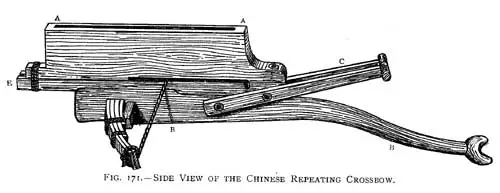
A non-recurve repeating crossbow (Wiki Image).

The ancient Persian Sparabara units: nine rows of archers protected by one row of shield-bearers (Wiki Image).
The Persian arrows and Chinese repeating crossbows were powerful weapons but had different strengths and weaknesses.
Persian arrows were typically made of long, straight shafts with broad heads. They were designed to penetrate armor and were often tipped with poison. However, they were also relatively slow to reload, and they could not be fired as rapidly as the Chinese repeating crossbow.
The Chinese repeating crossbow was a more versatile weapon. It could be used to fire a variety of different types of bolts, including those that were designed to penetrate armor, those that were designed to cause blunt force trauma, and those that were designed to spread poison. It was also much faster to reload than a Persian bow and could be fired rapidly.
However, the Chinese repeating crossbow was also heavier and more cumbersome than the Persian bow. It was also more difficult to aim accurately, and it was not as powerful as a Persian arrow.
Whether or not the repeating crossbows would have been able to penetrate a Greek bronze breastplate is a matter of debate. Some experts believe that the bolts would have been able to penetrate the breastplate, while others believe that the armor would have stopped them.
The weight of a repeating crossbow varied depending on the model. However, most repeating crossbows weighed between 10 and 20 pounds.
In conclusion, Persian arrows and Chinese repeating crossbows were powerful weapons but had different strengths and weaknesses. Suppose Darius III had incorporated the Chinese repeating crossbow into his army. In that case, he could have defeated Alexander the Great at the Battle of Gaugamela.
Here is a table comparing the Persian arrows and Chinese repeating crossbows:
| Feature | Persian Arrows | Chinese Repeating Crossbow |
| Range | 150-200 yards | 100-150 yards |
| Accuracy | Good | Fair |
| Rate of fire | Slow | Rapid |
| Penetrating power | High | Medium |
| Weight | 5-10 pounds | 10-20 pounds |
It is important to note that these are just general comparisons. There were many different types of Persian arrows and Chinese repeating crossbows. The specific performance of a particular weapon would depend on the model and the materials used to make it.
Alexander the Great invaded Persia: the Battle of the Granicus, the Battle of Issus, the Siege of Tyre, Alexandria of Egypt, and the Battle of Gaugamela.
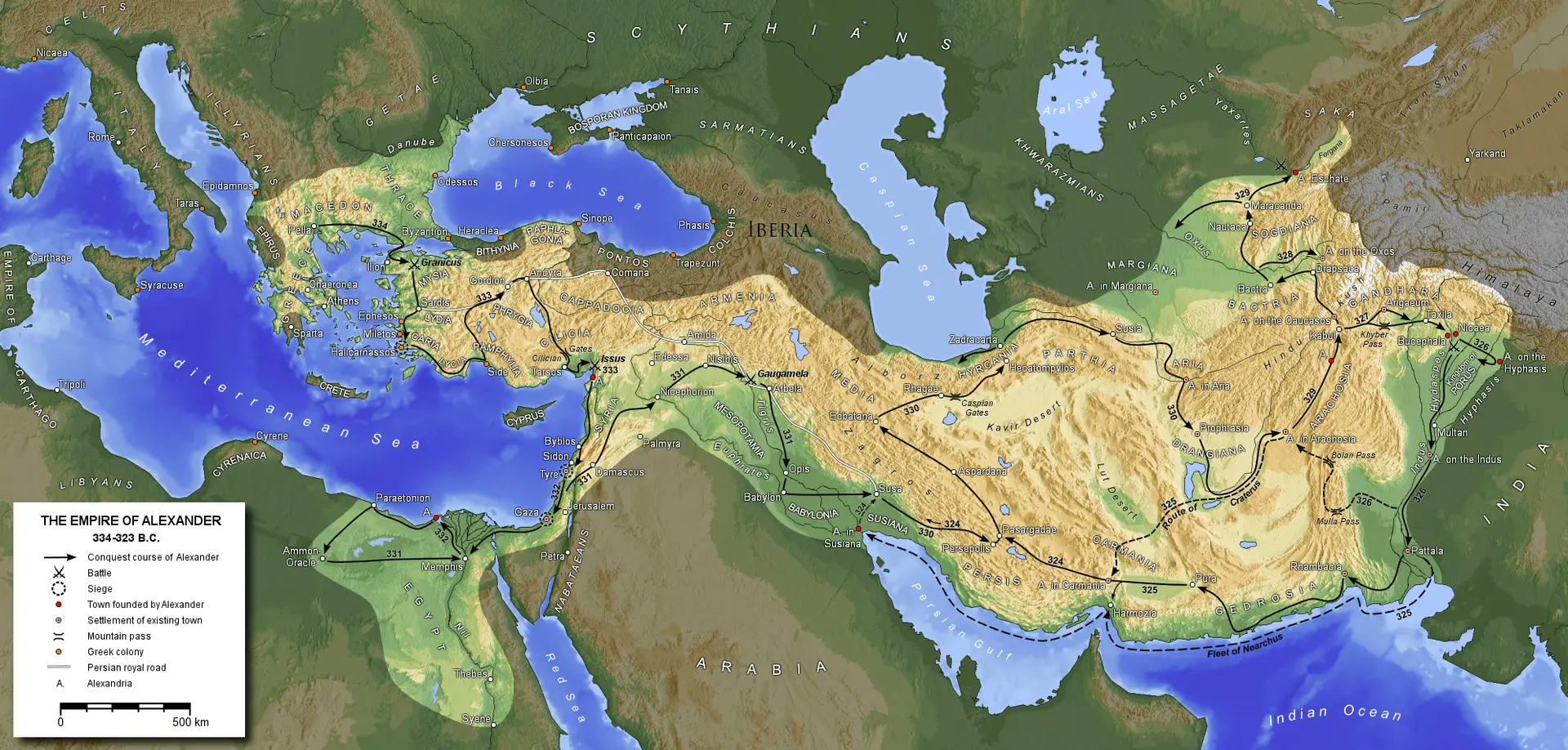
Map of Alexander’s empire and his route (Wiki Image).
Sure. Here are the battles that you mentioned, along with their significance:
- Battle of the Granicus (334 BC): Alexander’s first major victory over the Persians. He defeated a much larger Persian army at the banks of the Granicus River in Asia Minor. This victory gave Alexander control of western Asia Minor and paved the way for his further conquests.
Battle of the Granicus Alexander the Great
- Battle of Issus (333 BC): This was another major victory for Alexander. He defeated the Persian king Darius III at the Battle of Issus in southern Turkey. Darius was forced to flee the battlefield, and Alexander captured his wife and children. This victory gave Alexander control of much of Syria and Cilicia.
Battle of Issus Alexander the Great
- Siege of Tyre (332 BC): This was a long and difficult siege. Alexander was unable to take Tyre by force, so he built a causeway out to the island city. After seven months, the Tyrians surrendered. This victory gave Alexander control of the Mediterranean coast of Syria and Phoenicia.
Siege of Tyre Alexander the Great
- Alexandria of Egypt (331 BC): Alexander founded the city of Alexandria in Egypt after the Battle of Issus. The city quickly became a major center of trade and learning.
Alexandria of Egypt Alexander the Great
- Battle of Gaugamela (331 BC): This was the decisive battle of Alexander’s campaign against Persia. He defeated Darius III at the Battle of Gaugamela in northern Iraq. Darius was killed in the battle, and Alexander became the master of the Persian Empire.
Battle of Gaugamela Alexander the Great
These are just some of Alexander’s most important battles during his invasion of Persia. He also won victories at the Battle of the Hydaspes (326 BC) and the Battle of the Malli (326 BC) before his death in 323 BC.
What are the Greek tactics?
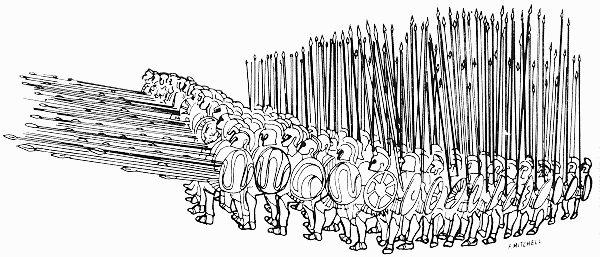
Drawing of a full 256-man phalanx formation (Wiki Images).
Suppose Darius III had incorporated the Chinese repeating crossbow into his army. In that case, it is possible that he could have defeated Alexander the Great at the Battle of Gaugamela. The repeating crossbow was a powerful weapon that could have disrupted the Macedonian phalanx.
The Greek phalanx was a formation of heavily armored infantry that was used to break through enemy lines. It was very effective against cavalry and light infantry but was vulnerable to concentrated fire from archers. The repeating crossbow would have allowed the Persians to fire many more arrows at the Macedonians, which could have disrupted their formation and caused heavy casualties.
In addition, the repeating crossbow was a relatively new weapon at the time, and the Macedonians may not have been familiar with it. This would have given the Persians an additional advantage, as they could have used the weapon more effectively.
However, it is also possible that the Macedonians would have been able to adapt their tactics to counter the repeating crossbow. They could have used their cavalry to disrupt the Persian archers, or they could have used their phalanx to shield themselves from the arrows. It is also possible that they could have developed new tactics specifically to counter the repeating crossbow.
Ultimately, it is impossible to say how the Battle of Gaugamela would have turned out if the Persians had repeated crossbows. However, this weapon could have significantly impacted the battle’s outcome.
Here are some of the Greek tactics that could have been used to counter the repeating crossbow:
- Use of cavalry: The Macedonian cavalry was one of the best in the world and could have been used to disrupt the Persian archers. The cavalry could have charged the archers, forcing them to abandon their positions or to fire their arrows prematurely.
- Use of the phalanx: The Macedonian phalanx was a very effective formation against cavalry and could have been used to shield the Macedonians from arrows. The phalanx could have formed a tortoise formation, which would have protected the soldiers from the arrows.
- Development of new tactics: The Macedonians were very innovative and may have developed new tactics to counter the repeating crossbow. For example, they could have developed a new formation that would have been more effective against the arrows.
It is important to note that these are just some tactics the Macedonians could have used. The specific tactics that would have been used would have depended on the specific situation on the battlefield.
What are the Persian tactics?
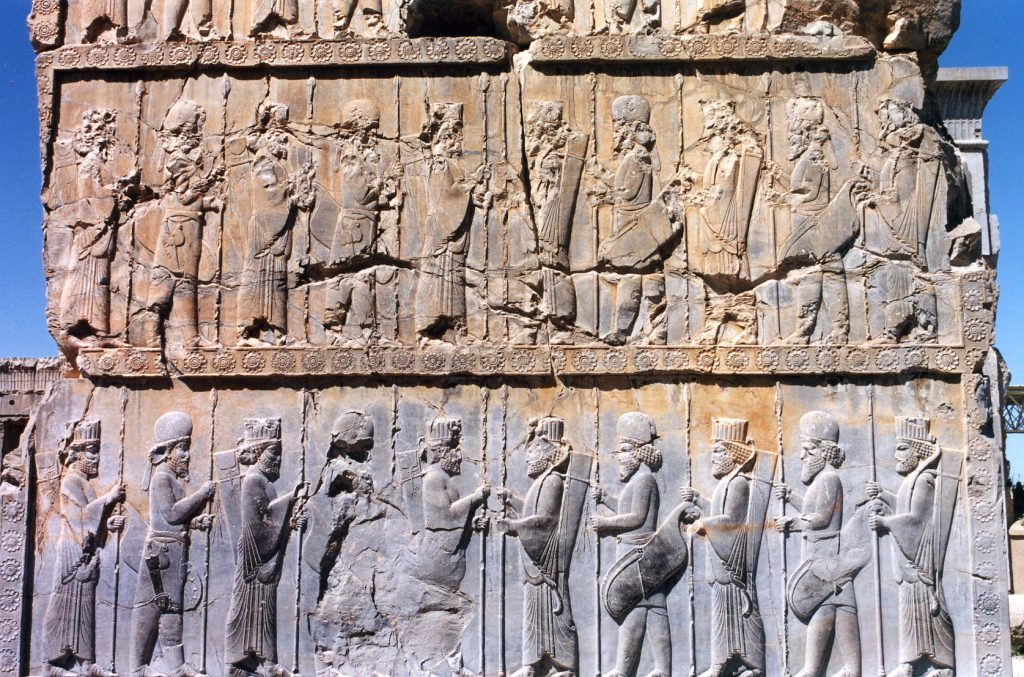
Persian and Median Immortals in ceremonial dress, bas-relief in Persepolis (Wiki Image).
Sure, here are some of the Persian tactics that could have been used with the repeating crossbow:
- Use of the repeating crossbow as a siege weapon: The repeating crossbow could have been used to fire arrows at the Macedonians from a distance. This would have forced the Macedonians to keep their distance, making it more difficult for them to attack the Persians.
- Use of the repeating crossbow as a skirmish weapon: Persian skirmishers could have used the repeating crossbow to harass the Macedonians. The skirmishers could have fired arrows at the Macedonians from a distance, making it difficult for them to advance.
- Use of the repeating crossbow in conjunction with other weapons: The repeating crossbow could have been used with other weapons, such as the bow and arrow, to create a more effective combined arms force. This would have allowed the Persians to fire more arrows at the Macedonians, making it more difficult for them to defend themselves.
It is important to note that these are just some of the tactics the Persians could have used. The specific tactics used would have depended on the specific situation on the battlefield.
Here are some additional thoughts on how the repeating crossbow could have changed the battle:
- The repeating crossbow could have been used to harass the Macedonians from a distance, making it difficult for them to advance.
- The repeating crossbow could have been used to target the Macedonian officers, who were essential to the command and control of the phalanx.
- The repeating crossbow could have broken up the Macedonian phalanx, making it easier for the Persians to exploit their numerical superiority.
The repeating crossbow was a powerful weapon that could have significantly impacted the Battle of Gaugamela. If the Persians had had this weapon, they could have defeated the Macedonians and changed the course of history.
What if the Persians won?
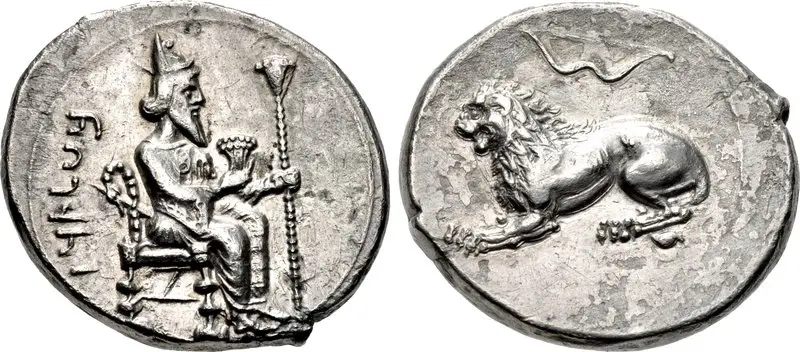
Coin minted in by Cilicia by its satrap Mazaeus, portraying Artaxerxes III as pharaoh on the obverse, while a lion is depicted on the reverse (Wiki Image).
If the Persians had won the Battle of Gaugamela, they could have changed the course of history. The Persians would have been able to maintain their control of the Achaemenid Empire and may have expanded their empire even further.
If the Persians had won the Battle of Gaugamela, they would have had many advantages. They had a larger army than the Macedonians and a more experienced general in Darius III. They also had the advantage of fighting on home soil, which would have boosted their morale.
In addition, the Persians would have had the repeating crossbow, a powerful new weapon. This weapon could have given the Persians an edge over the Macedonians and helped them win the battle.
Of course, it is impossible to say what would have happened if the Persians had won the Battle of Gaugamela. However, they would have had a good chance of changing the course of history.
Here are some of the possible consequences of a Persian victory at the Battle of Gaugamela:
- The Achaemenid Empire would have remained intact, and it may have even expanded.
- The Macedonian Empire would have been prevented from expanding into Asia and may have even been forced to retreat.
- The course of Western civilization would have been different if the Greeks had not been able to spread their culture and ideas to the rest of the world.
It is important to note that these are just some possible consequences of a Persian victory at the Battle of Gaugamela. The actual consequences would have depended on many factors, including the Persians’ actions after the battle.
In 332 BC, when did Darius III know about the Chinese repeating crossbows in design documents?

Ming Dynasty repeating crossbow (Wiki Image).
Unfortunately, based on the current historical evidence, it is exceedingly unlikely that Darius III (336-330 BC) had any substantial knowledge about the Chinese repeating crossbow during his reign. Here’s why:
Significant Historical Challenges:
- Vast Distances and Time: Communicating across the vast distance between Persepolis (Achaemenid capital) and China in that era was incredibly difficult and slow. Even with an ambassador in India, information traveling such distances would be unreliable and likely take years, making timely knowledge about a specific invention implausible.
- Cultural and Technological Disparity: Understanding and replicating the complex mechanism of the Chinese repeating crossbow would be challenging due to the cultural and technological differences between the regions. Ambassadors primarily focused on political matters, not acquiring such specialized knowledge.
- Limited Archaeological Evidence: No archaeological evidence suggests the Achaemenid Empire used repeating crossbows during Darius III’s reign. Despite their extensive military records, this absence strengthens the argument against their knowledge of this technology.
Alternative Scenarios and Their Limitations:
- Hypothetical Weapon Exchanges: While weapon exchanges between empires occurred, they typically involved familiar and adaptable armaments for prevailing warfare styles. The unique design of the repeating crossbow might not have been readily adopted or even understood by the Achaemenid military, making its inclusion in potential exchanges unlikely.
- Rumors and Descriptions: Even if vague rumors or descriptions about the crossbow reached India, the ambassador wouldn’t necessarily have the technical expertise to acquire or understand the intricacies for further dissemination. Additionally, replicating it based on hearsay would be extremely difficult.
Remember:
- Historical claims require concrete evidence, and currently, we lack any documented interaction or archaeological proof directly connecting Darius III to the knowledge of the Chinese repeating crossbow.
- While considering different scenarios and historical possibilities can be fascinating, they cannot replace the need for factual data.
Additionally:
- Research on ancient technology transfer and cultural exchange is ongoing. Future discoveries might shed more light on this specific question.
I hope this comprehensive explanation clarifies the improbability of Darius III’s knowledge of the Chinese repeating crossbow, even considering various hypothetical scenarios.



